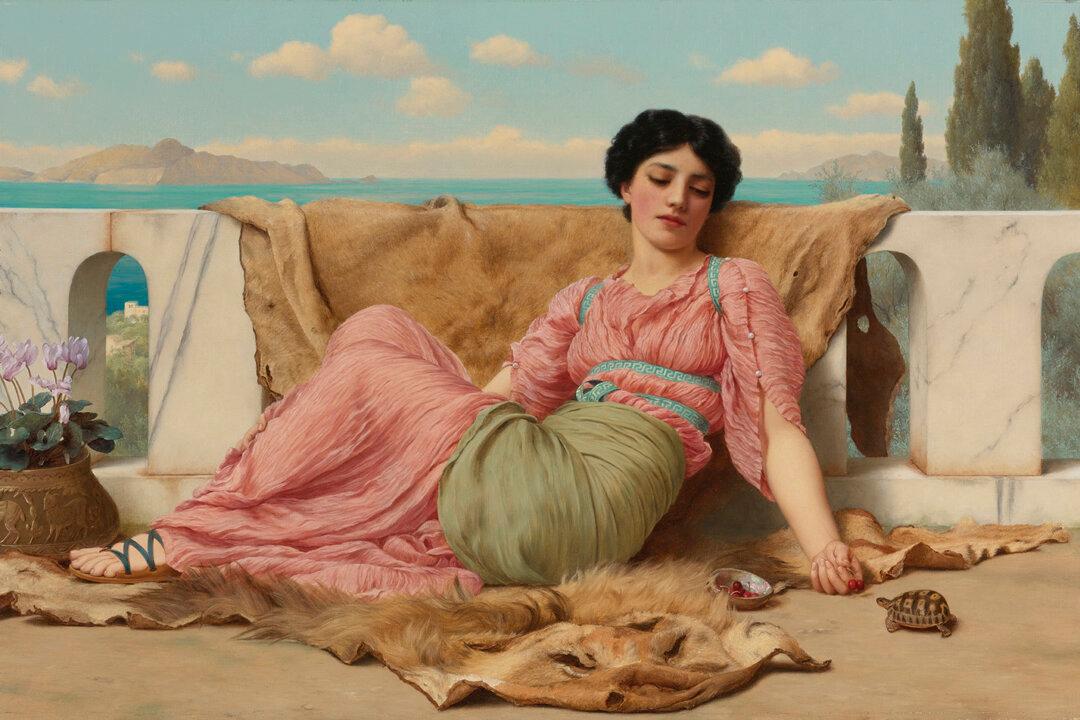John William Godward (1861–1922) was a neoclassical painter of the Victorian era. He established a reputation for his careful rendering of details and the ability to convey contrasting textures: flesh, marble, fur, and fabrics. From his London studio, Godward created romantic worlds that featured women bathed in soft light against Mediterranean dreamscapes.
At first sight, Godward’s paintings are an aesthetically pleasing symphony of beautiful women, colorful flowers, and meticulously detailed textures. Was his intention to paint scenes for the sake of beauty, also known as “art for art’s sake,” or did he intend hidden messages beneath the surface?





